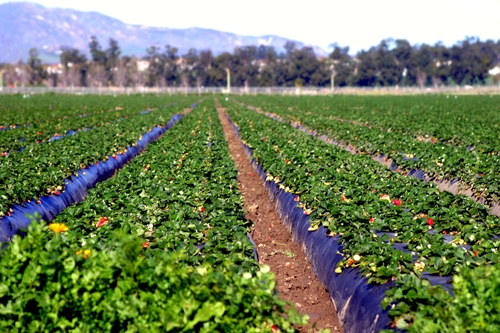After harvest, field work remains. Fungi, weeds and leftover crop are sitting in the soil and need to be cleared out to prepare for the next season. Nathan Boyd, associate professor of weed science, recently studied the efficacy of K-Pam soil fumigant on crop destruction and weed management after harvest.
According to Boyd, K-Pam was injected through drip tape following the last strawberry harvest of the season at the Gulf Coast Research and Education Center. “We applied rates anywhere from 10 gallons per acre all the way to 50 gallons per acre, versus nothing,” he explains.
Boyd then examined the effectiveness at each rate for strawberry termination, macrophomina control and control of different weed species. He found that although K-Pam applied at 10 gallons per acre was enough to destroy the crop, it was not enough to control the weeds.
“Two things were really interesting: different pests required different rates, which isn’t really surprising, but we were able to prove it. Also, the amount (of K-Pam) you apply impacts how far it moves into the bed, so that means how much water you need to apply changes as well,” Boyd says.
Boyd was also surprised at how well K-Pam controlled some weeds that growers have historically had issues with, such as black medic.
Share this Post










